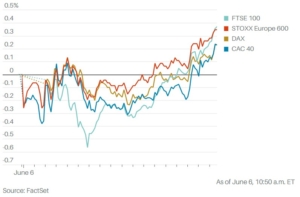A “Make or Break” Week for the Rally
What’s in Today’s Report:
- A “Make or Break” Week for the Rally
- Where the Opportunity is in Stocks Right Now
- Weekly Market Preview: Will Data Confirm “Goldilocks” Optimism?
- Weekly Economic Cheat Sheet: CPI Tuesday, Fed Wednesday, Key Growth Data Thursday
Futures are slightly higher on momentum from last week’s rally, as it was a very quiet weekend of actual news and investors are looking ahead to multiple important market catalysts this week.
Economically, the only notable number was Japanese PPI which rose 5.1% y/y vs. (E) 5.7% y/y in what is the latest sign of global disinflation.
Oil declined more than 2% overnight on over supply concerns as Russia is largely ignoring its production quota.
Today there are no notable economic reports nor any Fed speakers, so barring any major surprises markets should be relatively calm ahead of tomorrow’s CPI report, Wednesday’s FOMC decision and Thursday’s important economic data.

